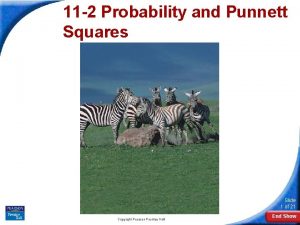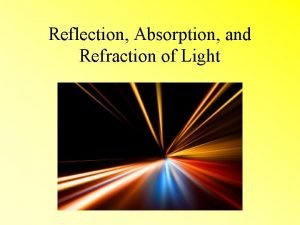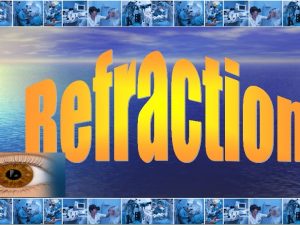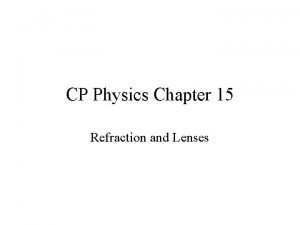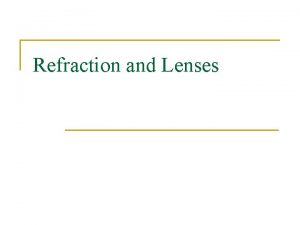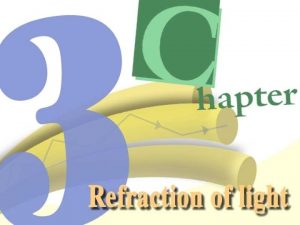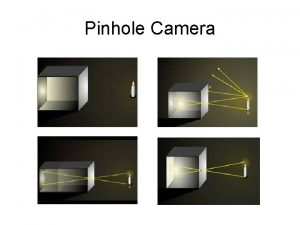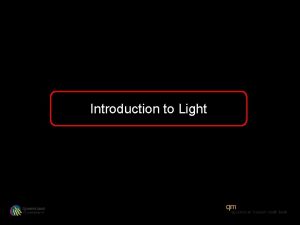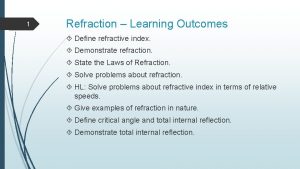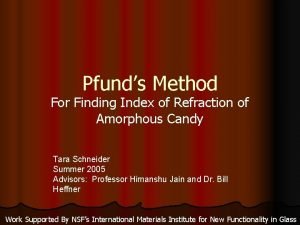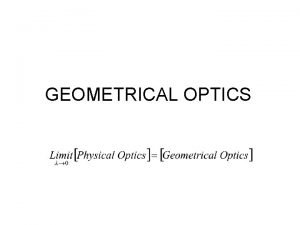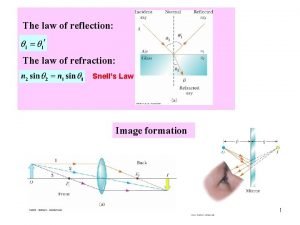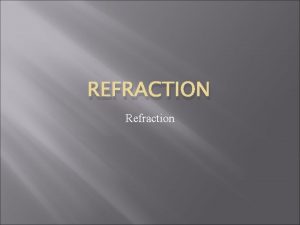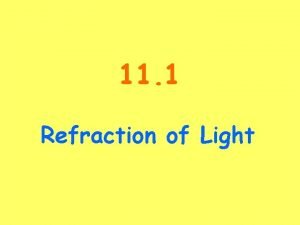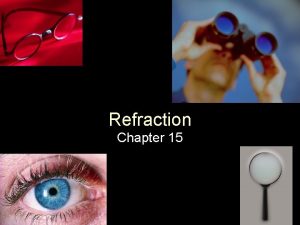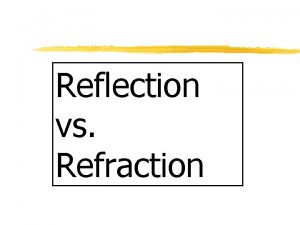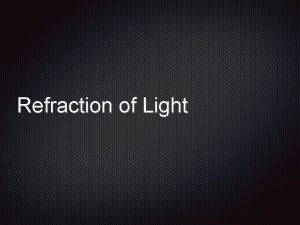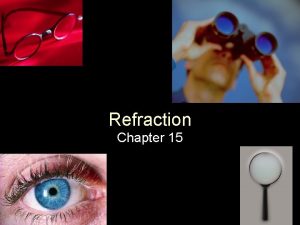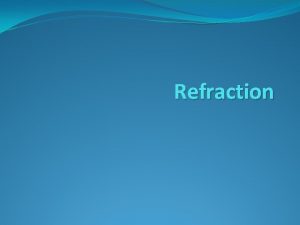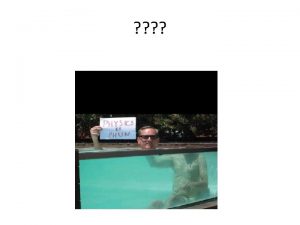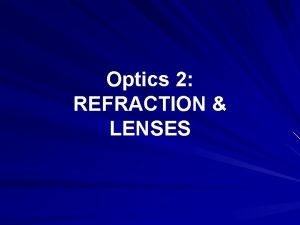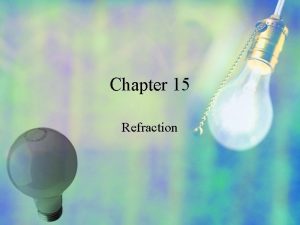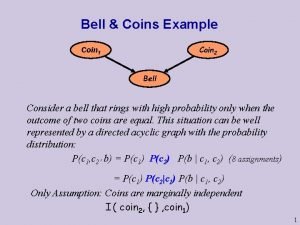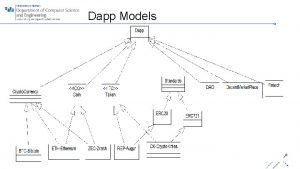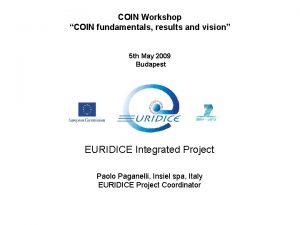Refraction The Reappearing Coin 1 Place the coin















- Slides: 15

Refraction

The Reappearing Coin 1. Place the coin at the bottom of the cup so that it is touching the inside edge. Put the cup on the lab bench. 2. Cover one eye with your hand look down at the coin. Lower your head until the edge of the cup just blocks your view of the coin. 3. Have your partner slowly pour water into the cup until you can see the coin. 4. Repeat so that your partner can watch the coin while you pour water into the cup.

The Reappearing Coin How can we see a coin that is not in our line of sight?

Refraction • Refraction is the bending of light as it moves from one medium to another • All transparent materials (e. g. , glass, plastic, water, diamond, etc. ) refract light • These materials are said to be optically dense

What causes refraction? • Light refracts because light travels at different speeds in different media Medium Air (vacuum) Water Acrylic Speed 3. 00 x 108 m/s 2. 26 x 108 m/s 1. 76 x 108 m/s

Refraction Terminology • The incident ray, refracted ray, and the normal all lie in the same plane • The incident ray and the refracted ray are on opposite sides of the line that separates the two media

Your turn • Activity – Refraction from Air to Acrylic

Rules of Refraction 1. When travelling from a “fast” medium to a “slow” medium, light bends towards the normal

Car Analogy • When the car leaves the pavement and enters the muddy surface, the tires move more slowly than they did on the pavement, causing the car to bend towards the dashed line in the diagram (normal)

Rules of Refraction 2. When travelling from a “slow” medium to a “fast” medium, light bends away from the normal

Car Analogy • When the car enters the smooth pavement, the tires move more quickly than they did on the muddy surface, causing the car to bend away the dashed line in the diagram (normal)

The Bent Straw • Why does the straw appear in two pieces at the waters’ surface?

The Bent Straw • Light coming from the part of the straw below the surface of the water is traveling from water (more dense) to air (less dense) • The speed of light is faster in air than in water, so light will bend away from the normal

The Bent Straw • The human brain perceives light to travel in straight lines, so a virtual image of the lower part of the straw is formed, making the straw to appear bent (optical illusion)

Your turn • Worksheet - Bending Light
 11-2 probability and punnett squares
11-2 probability and punnett squares A disturbance that transfers energy
A disturbance that transfers energy Place place value and period
Place place value and period A wave is a disturbance that transfers
A wave is a disturbance that transfers Reflection refraction transmission and absorption of light
Reflection refraction transmission and absorption of light Astenopy
Astenopy Refraction
Refraction Refraction in lenses
Refraction in lenses Semi circular glass block critical angle
Semi circular glass block critical angle Reflection of light at plane surface
Reflection of light at plane surface Introduction of light
Introduction of light Reflection and refraction venn diagram
Reflection and refraction venn diagram Learning objectives of refraction of light
Learning objectives of refraction of light Index of refraction of corn syrup
Index of refraction of corn syrup Laws of optics
Laws of optics Laws of refraction
Laws of refraction
